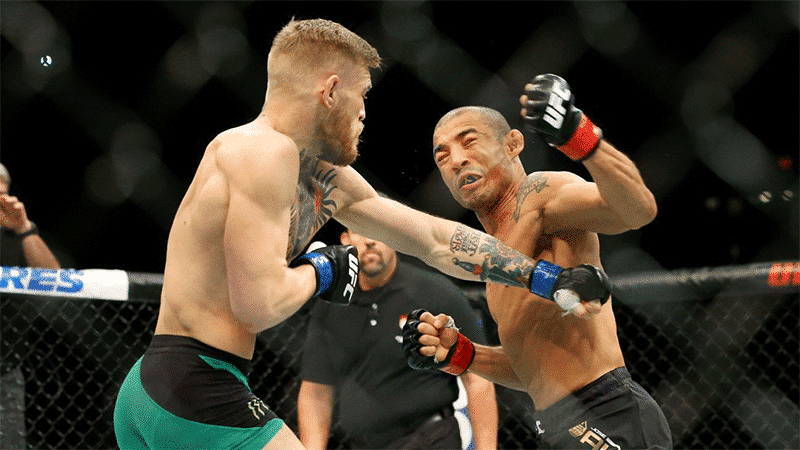For a fighter in an open stance matchup, it is easier to move back and to the open side. The reason is simple. A fundamental rule of footwork is you step with the foot that is closest to the way you want to go. If you were to move forward you’d move your lead foot first, Backwards you rear. To go left you’d move your left foot and right, right foot. This lets a fighter stay in their fight stance.
For a southpaw fighter moving back and to the open side is very simple. Rear foot goes back at 45 degrees and the lead follows on the same trajectory. This lets a fighter move back while staying in their stance. Now, going towards the closed side is much more complicated. The 45 degree angle is undoable which makes it harder to move fast.
If a southpaw moved their lead foot back at a 45 degree angle the right foot would have gone right but it would be the front foot that went back. This breaks a fighters stance and can cause issues because it will cause the feet, and therefore stance to square. A square on stance gives the opponent a much more open target, akin to the broadside of a barn. Defensively when more of you is showing to your opponent the more surface area they have to hit and the less surface area you’ll be able to cover with your elbows and arms (A square stance leaves one open to straight attacks). You’ll also not be able to brace effectively and any strike can leave you off balance due to having no base of sport behind you (Get someone to push you in a fight stance vs feet square. You’ll lose balance a lot easier with square feet. Unless it’s me pushing and you’ll cease to exist regardless of stance)
The square person (Talking about stance. You can still square yourself up in the ring and be fun at parties) has fewer offensive options. By removing their lead and rear hands they no longer have the utility provided by lead and rear hands. They have no base and will not be able to generate power, move or balance effectively.
It’s a similar matter with stepping to the open side with the rear foot first. Stepping to the open side would place their rear foot behind their lead foot in a bladed stance (Meaning rear foot directly in line with the front foot) A bladed stance is often used in point fighting for quick forward and backwards movement. The trade-off is it’s harder to throw rear strikes. Once again, it’s hard to rotate the shoulders into a strike this time due to the hips blocking the rotation. It also leaves the lead leg in a compromised position (Check out Robert Wwhittaker timing his low kicks on Urijah Hall every time he attempted to pivot out).
In summary, It’s easier to move to the backwards and laterally to the open side because it’s easier to stay in an effective fighting stance whereas in order to move laterally and backwards to the closed side the stance must be broken.
I will note that moving to the closed side is an effective strategy. I listed a few of the downsides to show how, in some cases, the inside position can be safer.
I should note as well why moving on these 45-deg lines is effective. Moving back and then left or right is as effective either way but it’s two movements. Moving back and then laterally is preferred to moving back to laterally. Moving back takes you out of range but the fighter moving forward can go forward quicker than the fighter going back can move back. Moving laterally can break off a line of attack but without getting out of range you’re liable for a bruising (Michael Chandler punting a strafing Tony Ferguson).

